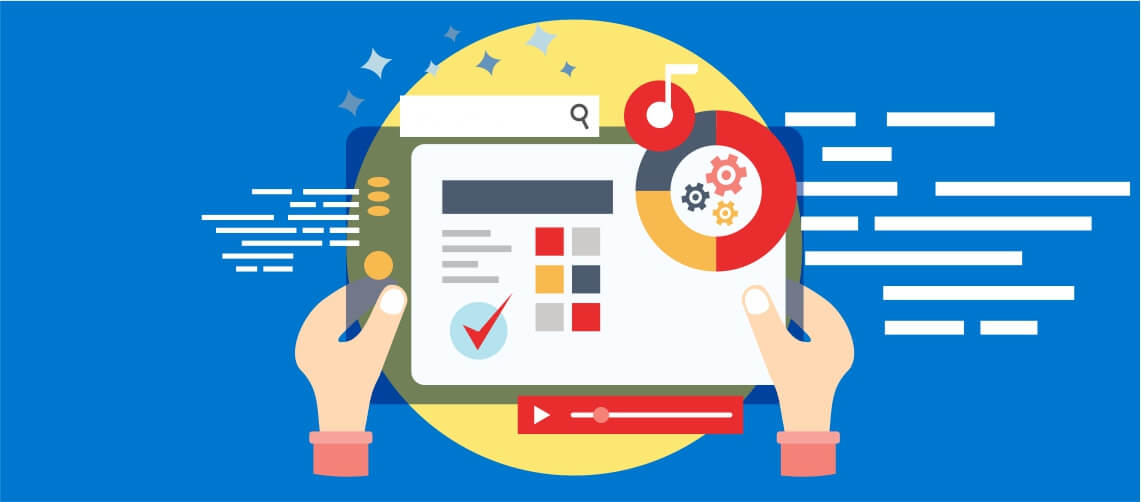 The digital technologies enable enterprises to automate various business processes and operations. But the technological needs differ from one enterprise to another. Based on the technological and business requirements, programmers nowadays have to write a variety of custom software products – desktop applications, web applications and mobile apps. Each type of application is built to meet specific business needs and based on predefined business requirements.
The digital technologies enable enterprises to automate various business processes and operations. But the technological needs differ from one enterprise to another. Based on the technological and business requirements, programmers nowadays have to write a variety of custom software products – desktop applications, web applications and mobile apps. Each type of application is built to meet specific business needs and based on predefined business requirements.
But the developers need to focus extensively on the software product’s usability and user experience, along with the business requirements. Also, they must explore ways to deliver a high quality software product without increasing development time and cost. Hence, it becomes essential for programmers to implement a number of software product development best practices to build software products that meet predefined business requirements and deliver optimal user experience.
Software Product Development Best Practices: 7 Best Practices to Simplify and Accelerate Software Product Development
1) Gather and Understand the Exact Business Requirements
No enterprise can make the software product development project successful without setting development time and cost realistically. The realistic development time will enable the project managers to monitor and assess the project efficiently. At the same time, the realistic development cost will help the manager to pick the right technologies and development tools. During the planning phase of the project, the project manager must analyse the business requirements elaborately. Also, he must convey the business requirements clearly to the developers and testers to meet the project deadlines.
2) Assess Pros and Cons of Digital Technologies
The programmers can write a single software product in multiple programming languages. There are also a number of general purpose programming languages that developers can use for writing a variety of software products. But the programmers must remember that each programming language has its own pros and cons. Each programming language further comes with specific built-in capabilities. The developers have to use frameworks or tools additionally to extend the core capabilities of the programming language. It is always important for programmers to compare various technologies based on precise needs of the software product development project.
3) Keep the Code Simple
The programmers can write a single software product in a number of programming languages. Likewise, they can build the software product rapidly by choosing from a wide range of frameworks and development tools. But it is always important for the programmers to keep the code base clean, readable, and organized. When the code is simple and readable, the developers can easily resolve complex development and maintenance issues. The readable code base will make it easier for programmers to fix the defects or bugs found in the software product.
4) Test the Software Product Continuously
Nowadays, software testing has become an integral part of software development lifecycle (SDLC). But the enterprises need to ensure that the software product is tested continuously during each phase of SDLC. They also need to deploy skilled testing to perform various types of functional and non-functional testing. At the same time, the businesses must automate the software testing process to enable testers to repeat the tests under varied user conditions and product more reliable test results. The continuous testing will further help the testers to get the defects in a software product early and programmers to repair the defects quickly.
5) Get the Code Reviewed Regularly
Each piece of code contains some form of error. But the programmer writing the code often fails to detect the flaws. An enterprise can easily keep the code flawless by getting code reviews performed at frequent intervals. The code written by a programmer can be verified and validated by another programmer to reduce bugs in the software product. The code also needs to be reviewed thoroughly before being integrated into the code base. The frequent code reviews will boost final code quality and reduce software testing time significantly.
6) Facilitate Seamless Communication and Collaboration
The latest project management methodologies like Agile and DevOps require enterprises to integrate software development and software QA testing processes to deliver high quality software products rapidly. No enterprise can build custom software products successfully without facilitating constant and seamless collaboration between programmers and testers. When the programmers and testers work a single team, it becomes easier for them to detect and fix the defects in the software product without any delay. The coordination further results in high quality code and continuous software testing.
7) Leverage Latest Technologies and Tools
No enterprise can speed up custom software product development without automating repetitive development and testing activities. They must use robust software development frameworks to make programmers and testers productive, and enable them to deliver high quality software rapidly. At the same time, the enterprises can reduce both development time and cost by availing latest technologies. For instance, an enterprise can always avoid building and maintaining physical IT infrastructure by getting the software product developed, tested, and deployed in the cloud. They can further take advantage of the emerging technologies to boost the software product’s performance and usability without increasing development time or cost.
On the whole, the developers must implement a number of best practices to deliver software products that meet business requirements and deliver richer user experience. But the developers must choose and implement best practices according to precise nature and needs of each software product development project. The enterprises outsourcing software product development need to follow a number of steps for find the right partner to build custom software products in a timely and cost-efficient way.